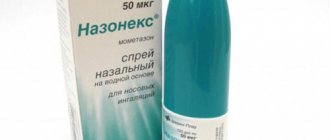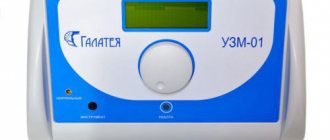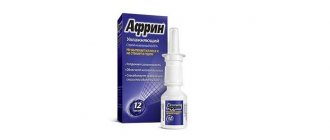Methods for treating cough associated with sinusitis
Sinusitis is not necessarily accompanied by a cough. But if a cough has already appeared, then it will not be possible to get rid of it without curing the sinusitis. Even after getting rid of sinusitis, many patients continue to cough for a long time. This indicates that the bronchial tree has been infected, therefore, bronchitis will have to be treated long and hard, and this cough does not go away easily. What are the main methods of treating cough with sinusitis:
- Antibacterial and antiviral drugs are used if the etiology of sinusitis and the accompanying cough is established. To do this, a thorough diagnosis must be carried out. Antibacterial drugs include a group of antibiotics that can cause significant harm; if sinusitis is caused by fungi, this will aggravate the already difficult situation of the patient. It is absurd to take antibiotics even if the cause of sinusitis is associated with an allergic reaction of the body. All this is true for antiviral drugs. That is, you can take these drugs only as prescribed by an otolaryngologist, after a thorough examination.
- Decongestants and antihistamines are prescribed by a doctor if the cause of sinusitis is an allergy. In this case, it is completely useless to fight the cough, because it is caused by the irritating effect of the exudate on the larynx and trachea. By getting rid of the cause, you will be able to avoid coughing in the near future.
- Procedures for rinsing the sinuses and nasopharynx followed by gargling with saline solutions have proven to be very effective in the treatment of sinusitis and accompanying cough. For the solution, you can take ordinary table salt or use sea salt. Dissolve a level teaspoon of salt in a glass of lukewarm water, and alternately inhale this water through the right and left nostrils. It is desirable that the water flows through the nasopharynx and is spat out. If you have sinusitis, it is better not to blow your nose; there is a risk of exudate getting into the frontal sinuses. And rinsing gently removes mucus, improves nasal breathing and prevents mucus from entering the larynx and trachea. After the nasal passages have been washed, you should rinse your throat thoroughly, throwing your head back. The solution must be made fresh each time you wash it. This procedure should be carried out as mucus accumulates. It will be of great benefit.
- Physiotherapeutic procedures are widely used in the treatment of sinusitis:
- UHF is a procedure based on the impact on the human body of a high-frequency electromagnetic field with an oscillation frequency from 27.12 MHz to 40.68 MHz. Under the influence of adequate doses of this influence, significant changes occur in the human body in organs and systems due to the entry of immune bodies and other protective cells of the reticuloendothelial system into the site of inflammation;
- electrophoresis of medicinal substances. This is a procedure in which a medicinal substance is applied to electrode pads and, under the influence of an electric field, penetrates the body through the skin or mucous membranes. It has a direct local healing effect on the affected area;
- laser is a new and very effective method of physiotherapy for sinusitis. As a result of the effect of laser irradiation on the mucous membrane of the nose and maxillary sinuses, a microburn occurs that does not cause pain in a person, which heals very quickly and creates seals on the mucous membrane without scarring. This helps to increase the clearance of the nasal passages and make breathing easier. In addition, the laser effectively reduces swelling of the mucous membrane. Under the influence of the laser, cell membranes are renewed, and the active process of epithelization of the mucous membrane occurs. A positive effect is observed after the first procedure and contributes to a complete cure for sinusitis without punctures or punctures.
Antitussive therapy for sinusitis
Sinusitis and cough are unequal concepts, because the latter symptom is a logical continuation of the first. As a result, getting rid of cough alone will be of little effect if its cause, acute sinusitis, is not treated.
The patient may be offered one or more methods to eliminate the disease. Often a combination treatment consisting of several methods is prescribed. Let's consider the most effective of them.
Antibacterial therapy
It is prescribed in almost all cases of sinusitis. The most popular drugs are augmentin and azithromycin. They contain quite strong substances in order to quickly overcome a bacterial infection and weaken the effect of pathology on the patient’s body.
The above drugs are only suitable for injection into a muscle or vein. Among the local antibiotics, isofru can be noted.
Rinsing the nasal canals
We are talking primarily about the well-known “cuckoo” procedure. Modern technologies allow manipulation with minimal discomfort for the patient.
During the procedure, purulent and mucous masses accumulated there are released from the nasal sinuses. You can also rinse your nose at home. Sea water from a pharmacy or regular table salt for preparing a solution are perfect for this.
Vasoconstrictor cough medicines for sinusitis
Such drugs are aimed at relieving swelling inside the nasal canals. If the patient manages to restore full breathing through the nose, he will experience less discomfort in the throat, and therefore not cough as often.
Puncture of the maxillary sinuses
A radical technique used in advanced cases of sinusitis. The idea is to pierce the wall of the maxillary sinus to insert a catheter through which the pus will come out.
Otolaryngologists try not to use this method until the last minute. The painfulness of the puncture and the low chances of complete recovery are the main disadvantages of puncturing inflamed sinuses.
Antiallergic drugs
Used in situations where sinusitis occurs due to an allergic reaction. Antihistamine medications also effectively combat edema and help improve the patient’s well-being.
How to treat cough from sinusitis?
The most common off-season pathologies are sinusitis and respiratory infections, which have a similar clinical picture: cough, nasal congestion, runny nose. The onset of inflammation of the paranasal sinuses occurs like a mild form of the flu, which makes diagnosis and timely treatment of sinusitis and cough difficult. Symptoms in adults and children allow the disease to be identified at an early stage if the diagnosis is carried out by a specialist.
When exposed to pathogenic flora (viruses, bacteria, fungi) or endogenous factors (allergens, chemical elements, hot/cold air), the nasal mucosa becomes inflamed and swollen, which disrupts the circulation of air masses, stimulates the hyperproduction of thick mucus, and affects the speed of its movement. These changes characterize the onset of sinusitis.
In pediatrics, the main cause of inflammation of the paranasal sinuses is the anatomical and physiological features characteristic of the child’s body. Additionally, the appearance of sinusitis is associated with gastroesophageal reflux disease, aspiration of a foreign object, and injuries to the facial skeleton.
For reference! Classification of sinusitis is carried out according to the localization of the inflammatory process: sinusitis - damage to the maxillary sinus, frontal sinusitis - the frontal bone, ethmoiditis - the ethmoid labyrinth, sphenoiditis - the sphenoid sinus.
The first 7-10 days of illness occur with typical symptoms of a cold:
- low-grade fever;
- nasal congestion;
- mucopurulent discharge;
- decreased sense of smell;
- cough;
- hoarseness;
- pain and sore throat;
- weakness;
- lacrimation.
The classic symptom of sinusitis is pain in the projection of the face. Depending on the location of the inflammation, pain may occur in certain areas of the face (temporal and occipital parts, eyes, cheekbones, cheeks), which explains the proximity of the paranasal sinuses to the cavities of the skull, organs of the central nervous system, and the cardiovascular system.
Features of cough with sinusitis
The mechanism of cough is associated with postnasal drip syndrome, when mucus flowing from the nasopharynx into the tracheobronchial apparatus irritates the cough receptors of the larynx. Additionally, the act of coughing is stimulated by the viral or bacterial etiology of sinusitis.
This is due to the ability of pathogenic microorganisms to simultaneously infect the upper respiratory tract (nose, paranasal sinuses, nasopharynx) and lower respiratory tract (bronchi, trachea, lungs). Inflammation and swelling of the bronchopulmonary organs is responded to by a cough of varying productivity.
For reference! The intensity of the cough determines the position of the body. The number of spastic exhalations increases in a horizontal position (during night sleep) and in the morning after waking up. When positioned horizontally, the mucus is swallowed.
At the initial stage, cough with sinusitis in a child or an adult is unproductive or unproductive. The completion of reflex acts does not free the nerve fibers of the mucous membrane from the irritating influence; the patient is haunted by the feeling of a lump of mucus in the throat, which creates the urge to jerky exhalations.
A debilitating and obsessive cough changes subjective indicators, disrupts sleep and nutrition, and is therefore difficult to tolerate by patients, especially children.
On days 3-4, the cough becomes moist, but difficulties in sputum evacuation create damage to mucociliary transport and changes in the rheological properties of bronchial secretions.
Can a cough occur from sinusitis?
The causes of sinusitis can be different. Often they are hidden in infections of a bacterial or viral nature. Inflammation of the nasal sinuses in most cases develops against the background of an infectious lesion of the upper respiratory tract, less often – of the lower respiratory tract. It is in the latter case that a severe dry cough may occur, which does not bring relief and causes pain and discomfort. The reason lies in damage to the respiratory system.
In some cases, cough may occur as one of the manifestations of sinusitis. In this case, the symptom may be viral, allergic, bacterial, polypous or other in nature. The disease is associated with the release of large amounts of mucus, which flows into the nasal cavity and enters the mucous membranes and the back wall of the pharynx. There it causes a sensation of soreness and discomfort in the throat, which leads to coughing.
If sinusitis becomes chronic, then a certain amount of mucus constantly enters the lower parts of the respiratory system, leading to a strong, incessant cough. Since the amount of mucus entering the trachea is relatively small, the cough is usually dry. Its treatment consists, first of all, in getting rid of the main cause of the disease, that is, in eliminating the sinusitis itself.
Treatment of sinusitis with pharmaceutical drugs
The main medications for the treatment of sinusitis in a child include:
- Antibiotics.
- Drops.
- Antiseptics.
- Bacteriophages.
Antibiotics are intended to eliminate the source of infection. Moreover, antibiotics prevent the disease from developing further, thereby preventing it from infecting other organs. For treatment to be effective, antibiotics must be prescribed by a qualified doctor. To do this, a sensitivity test for antibiotics of a certain group is carried out. Incorrect prescription of drugs will not only not cure the inflammatory disease, but will also cause unforeseen serious consequences.
In addition to antibiotics, which are aimed at eliminating the disease itself, there are other medications that help alleviate the course of the disease. These medications include drops. The drops will help relieve nasal congestion, thereby making breathing easier for the patient. By clearing the nasal cavity, the cough with phlegm disappears, and the patient’s general well-being improves. You should use the drops for no more than 5 days.
The main goal of treating sinusitis is to remove pus from the nasal cavity and clear the bacterial infection. Antiseptics do an excellent job of this task. Before using an antiseptic, you need to clean your nose with saline solution, which is sold at any pharmacy. If you can’t buy the product at the pharmacy, then the solution can be prepared at home. You need to clean your nose several times a day.
Bacteriophages are not as popular in the treatment of sinusitis as antibiotics, although the drug is much more effective and does not cause as many side effects. This low popularity of a quality drug is explained by its high cost. Therefore, for young families where a child has sinusitis, it is much easier to buy antibiotics than expensive bacteriophages.
If the patient develops a high temperature, then it must be brought down after the mark of 38 degrees. Ibuprofen will do the job perfectly.
Cough with sinusitis in children is perfectly treated with syrups and expectorants. The cough disappears completely after the disease is completely cured.
If drug therapy is ineffective within 2 weeks, the attending physician prescribes surgical intervention in the form of a puncture. Many people do not want to undergo a puncture due to the risk of developing the disease at a chronic level. This is also possible, although extremely rare. In any case, you must listen to your doctor, and then the treatment will take place with minimal risk to health.
Treatment
Effective treatment of cough with sinusitis involves eliminating the root cause of the symptom. If the inflammatory process in the paranasal sinuses is not eliminated, then no expectorant or mucolytic drugs will help to fully cure the unpleasant symptom.
Therapy for a disease that occurs with the parallel development of cough is aimed at stabilizing the outflow of secretions, normalizing the functioning of the sinus mucosa, reducing swelling and eliminating the pathogen. Achieving all of these goals guarantees the elimination of symptoms.
Treatment of the corresponding pathology can be conservative or surgical.
In the first case, the following groups of medications are used:
- Antibiotics (cephalosporins, penicillins) and antiseptics (Chlorhexidine). Antimicrobial agents in the form of tablets and rinses are used to inhibit the activity of pathogenic microorganisms developing in the cavity of the maxillary sinuses;
- Vasoconstrictor sprays (Sanorin, Naphthyzin). Medicines reduce swelling of the mucous membrane, stabilizing the outflow of secretions;
- Antitussives (Codelac) for dry coughs and expectorants (Ambrobene, Bromhexine) for wet coughs.
The use of the above remedies is carried out only after consulting a doctor to minimize the risk of complications.
Important! Surgical treatment involves puncture of the maxillary sinuses with their washing with antiseptic solutions and local administration of specialized drugs. Appropriate treatment is indicated for chronic forms of the inflammatory process that occur against the background of a constant cough and symptoms that are not amenable to conservative therapy.
Cough with sinusitis in adults
A dry cough that develops with sinusitis in adults reduces the patient’s performance. Adequate treatment ensures a quick recovery with the ability to continue working.
From the groups of drugs described above, the following are used in practice:
- Isofra (antibacterial agent), Protargol (antiseptic based on silver ions);
- Interferon, Ingaron - immunomodulators to stimulate endogenous defense mechanisms;
- Flixonase, Beconase, Nasonex are topical (local) hormonal drugs used for severe forms of the disease;
- Xylin is a moisturizing medicine based on essential oils that stabilizes the functioning of the nasal mucosa and corresponding sinuses;
- Tizin, Nazivin, Nazol are vasoconstrictor sprays that reduce swelling. A group of medications widely used in the treatment of various nasal pathologies.
The use of vasoconstrictor sprays (decongestants) in adults and children for more than 4-5 days is not recommended due to the development of addiction of the mucous membrane to the action of the corresponding agents. The result is an increase in edema due to the insufficient effectiveness of medications. To continue therapy, it is recommended to take a break (up to 1 week).
For sinusitis in children
Cough with sinusitis in children develops more often, which is due to the anatomical features of the structure of the respiratory tract. The same groups of medications are used to treat the corresponding symptom. The main thing is to choose children's doses to prevent negative consequences for the child.
Interesting! An effective method for eliminating sinusitis without punctures of the sinuses is the use of a YAMIK catheter. The essence of the technique is to seal the nasal passages and sinuses to prevent the flow of rinsing agents into the respiratory tract. Appropriate therapy is carried out in children from 5 years of age.
Causes of cough
The main symptoms of inflammation of the paranasal sinuses are:
- discomfort in the nasal area and projection of the maxillary cavities,
- increased body temperature, from 37 to 39 degrees, depending on the pathogen and stage of the disease;
- feeling of stuffiness and difficulty in nasal breathing;
- discharge of mucus and pus from the air pockets;
- pain syndrome radiating to different parts of the head;
- decreased sense of smell;
- general weakness and fatigue.
At the same time, with sinusitis and coughing is not a rare occurrence. It is a secondary symptom and can torment a person, both in acute and chronic forms of the disease.
A cough can develop with an acute viral or bacterial form of inflammation of the sinuses. In this case, pathogenic microorganisms do not act selectively, covering both the upper respiratory tract and all cavities of the inner nose, causing swelling of the tissues and narrowing of the connecting channels, and the lower respiratory tract - the lungs and bronchi. It is the invasion of the bronchi and lungs by pathogens that causes painful, dry, unproductive thumping, which is painful and does not alleviate the patient’s condition.
In fact, this type of cough does not directly depend on sinusitis, it goes along parallel paths with it. A person who has been attacked by a virus takes measures to relieve the most unpleasant symptoms, including the throat reflex. Mucolytic drugs do their job within a few days of treatment - sputum begins to be coughed up, coughing becomes productive and not so painful. Often in such cases, a person learns that he has sinusitis only after the main symptoms of a viral infection have passed.
In other cases, it is maxillary sinusitis that causes cough. This happens if the pathogens are pathogenic bacteria or allergens, as well as polyps or cysts. The negative impact of bacterial flora on the mucous membranes of the paranasal sinuses leads to increased secretion of the goblet glands and the appearance of pus in the exudate. In an effort to evacuate the accumulating mucus as quickly as possible, the ciliated epithelial cells work in enhanced mode.
The discharge from the adnexal pouches ends up in the nasal cavity and can be excreted in two ways:
- Through the anterior nasal passages and nostrils, which looks like the usual snot and dried crusts.
- Through the back of the nasopharynx into the throat, followed by spitting or swallowing. In this case, mucus flows down the back wall of the throat, causing severe soreness. Next, part of the secretion enters the larynx and trachea, where it is perceived by receptors as an atypical liquid. This activates a reflex aimed at removing it from the respiratory tract.
In the acute form of sinusitis, quite a lot of exudate enters the trachea, so the cough is wet and a large amount of sputum is coughed up. This is a signal that the disease has passed the initial stage and the condition will worsen in the future. It is necessary not to waste time and begin to comprehensively treat sinusitis with medications, eliminating its negative impact on other body systems.
If acute sinusitis lasts a long time or becomes chronic, then the purulent discharge from the sinuses flows into the throat almost continuously, but in small quantities.
The urge to cough only irritates the walls of the throat, but does not bring relief. If sinusitis is not adequately treated, then regular leakage of exudate into the lower respiratory tract can lead to complications such as pneumonia (pneumonia), tracheitis or bronchitis. At the same time, conventional expectorants do not help, and this phenomenon will not go away on its own.
Drug treatment of cough
It is worth noting that a sore throat and cough are considered only secondary symptoms of the inflammatory process in the maxillary sinus. For this reason, it is necessary to eliminate this symptom only in combination with the treatment of sinusitis.
Antibiotics
They are required to eliminate bacteria that develop in the cavity of the maxillary sinuses and are the main etiological factor. Various drugs may be used. It depends on the pathogen.
Initial antibiotic therapy is prescribed empirically, and subsequently it can be adjusted depending on the results of microbiological testing. Penicillins are mainly used - Amoxiclav, Augmentin, etc. Also, sometimes the doctor may prescribe cephalosporins - Cefazolin or Ceftriaxone.
Painkillers and antipyretics
Most experts do not recommend taking measures to lower the temperature if the reading is less than 38.5 ºС. The exception is for patients who are intolerant to hyperthermia.
Mostly drugs are prescribed based on:
- Paracetamol - Panadol.
- Acetylsalicylic acid - Aspirin.
- Ibuprofen - Nurofen.
In addition to the analgesic effect, the presented remedies fight inflammatory processes and help get rid of headaches. These medications have a wide list of contraindications and side effects. Such treatment can only be prescribed by the attending physician.
Decongestants
There are several options to relieve swelling of the mucous membrane. Vasoconstrictors are used in the form of a spray or drops that are introduced into the nasal passages. There are many similar drugs available in pharmacies. You can choose a product whose effect lasts up to 6 hours (Tizin, Naphthyzin), up to 8 (Otrivin, Galazolin) or up to 12 (Rinazolin).
Antiseptics
Required for disinfection of the nasal cavity, paranasal sinuses and nasopharynx in general. Protargol, Polydex or Isofra are often prescribed. Experts also recommend using Dioxidin for rinsing the nasal cavity and paranasal sinuses.
Mucolytics
To increase the fluidity of exudate in case of sinusitis and sputum, in case of developed diseases of the lower respiratory tract, mucolytics are used. Mostly prescribed are Ambroxol, Mucaltin. Drugs are prescribed depending on what type of cough the patient has and the presence of contraindications. Mucolytics are indicated specifically for dry coughs to stimulate sputum production.
Treatment of cough associated with sinusitis
When a cough appears due to sinusitis, only timely treatment of the underlying disease will give a positive result. If you treat only this symptom, there will be no success. Therefore, it is necessary to get rid of the disease in a comprehensive manner.
Treatment of sinusitis can be medicinal, using physiological procedures and traditional methods.
Drug treatment
When using medications, sinusitis and cough can be eliminated. This treatment is aimed at:
- To destroy pathogenic microflora. To do this, the doctor prescribes an antibacterial drug. The drug group is determined using the results of a smear from the nasal mucosa. These can be penicillin or macrolide tablets, and sometimes cephalosporin injections are prescribed. The latter are used for the “Cuckoo” procedure. Doctors sometimes prescribe the local antibiotic Bioparox. Its advantage is that it has few side effects, since it acts precisely on a specific affected area and does not create a high concentration of the drug.
- To reduce fever and pain in the patient. Doctors advise taking medications to lower the temperature when it reaches 38.5 °C. The exception is patients who have difficulty with hyperthermia. The most common medications are those containing the active ingredients paracetamol or ibuprofen, as well as acetylsalicylic acid. All of them have antipyretic and anti-inflammatory effects and bring relief from sinusitis.
- To reduce swelling of the nasal mucosa. This result is achieved with the help of vasoconstrictor drugs - they are dripped or injected into the nasal passages. It should be remembered that these medications cannot be used for more than a week, because bleeding may occur, and then atrophy of the mucous membrane will occur. There are also other drugs with a similar effect on the human body - these are combined drugs with antiallergenic, antipyretic and anti-inflammatory effects, such as Theraflu or Coldrex.
- To cleanse the nose with antiseptics that disinfect cavities.
- To relieve allergic sinusitis with corticosteroids made in the form of a spray. They have a positive effect on the immune system.
See also
How to determine sinusitis in adults and children at home
Read
Since, in addition to sinusitis, many patients have a cough reflex, they should take mucolytic drugs.
These are drugs that make mucus more liquid and promote its removal through the nose. They also make coughing easier. During the examination and after receiving test results, the doctor will prescribe the necessary medications.
Physiological procedures
To enhance the effect of treatment, doctors use physiotherapeutic procedures:
- Electrophoresis. The electric field helps the medicine penetrate better into the affected area.
- Laser irradiation. This technology promotes painless enlargement of the nasal passages and reduces the size of swelling. The patient gains ease of breathing. Thanks to the laser, mucous membranes are quickly regenerated. Positive results appear immediately.
- UHF. The action of the electromagnetic field enhances the therapeutic effect of the therapeutic course.
Help from folk remedies
You can also improve your health at home, in particular, get rid of cough. There are many recipes for this. Here are some of them.
Milk with honey
To prepare the drink, take warm milk (200 ml) and add honey (1 tablespoon). At the end of cooking, add a piece of butter. When used, the product will soften the throat and other respiratory organs, and the person will cough less.
Mustard plasters or ointments with eucalyptus (menthol)
When the body temperature is normal, treatment can be carried out with mustard plasters. They are placed between the shoulder blades and on the chest (they should not be placed on the heart area). This distracting manipulation will help reduce the cough reflex.
Plasters or ointments with eucalyptus and menthol will also be useful. They are similar to the action of mustard plasters - they irritate the skin, and thus reduce the sensitivity of nerve endings in the organs of the human respiratory system.
Can there be a cough with sinusitis?
The problem is a certain reflex release of air from the respiratory tract, which is provoked by exposure to toxins produced by microorganisms or irritation of the mucous membrane. These toxic substances have a specific effect on the corresponding part of the brain. Sinusitis can occur against the background of both of the above reasons.
Find out how to get rid of headaches due to sinusitis here.
The cough that accompanies sinusitis is distinguished by the presence of discharge. Based on this parameter, a dry or wet version of coughing is distinguished. Let's take a closer look at each of them.
Dry
Dry coughing can be directly or indirectly promoted by mucus running down the back of the throat. With sinusitis, the secretion of epithelial cells in the nose and sinuses increases. A certain part of the mucus is retained in the cavities, causing stagnation, which provokes inflammation. The remaining liquid irritates the mucous membrane, which is why a dry cough appears reflexively. At the same time, the flow of mucus provokes a condition when there is a desire to reflexively remove air from the breathing tract. The result of this is a non-productive syndrome, causing the patient discomfort and a lot of inconvenience.
To transform a dry cough into a wet one, you need to inhale medications, herbal decoctions, as well as rinse the throat with antibacterial drugs, gargle to wash away the pus of the maxillary sinuses from the walls, eliminate soreness, and block the entry of pathogenic microflora into the respiratory tract. Mucolytic agents thin the mucus and facilitate its removal, accelerating the healing process.
Wet (with phlegm)
After some time or after using mucolytic agents, a wet cough with sputum appears. There is no pain. This reaction of the body is a positive sign of recovery. Thanks to the removal of mucus, the immune system fights infections in the respiratory system. Most pathogenic microbes leave the body along with the substance.
This material will tell you why swelling of the eye occurs with sinusitis.
Cough as a residual symptom of sinusitis
Due to the fact that the mucus that accumulates in the sinuses contains many pathogenic bacteria, there is a possibility of developing a bronchopulmonary infection. Penetrating into the respiratory system through the trachea, sputum from the maxillary sinuses can cause bronchitis and sometimes even pneumonia.
Some patients complain that after completing therapy against sinusitis, a non-productive, pressing cough continues to bother them. This symptom suggests that a certain amount of pus from the sinuses has descended to the respiratory organs and provoked an inflammatory process inside them.
It is much easier for adult patients to make a correct diagnosis if the cough after sinusitis does not go away. Such patients interact better with the doctor and can accurately describe what is bothering them and how.
If we are talking about a child, then he cannot always determine whether his throat is sore. However, even in this case, it will not be difficult for an experienced specialist to identify the presence of sinusitis or its residual signs, and also to eliminate the problem in a short time.
A child coughs with sinusitis
Determining that the cause of a sudden cough in a child is sinusitis is not so simple. Young children sometimes cannot understand what exactly is bothering them, much less explain it to adults. A dry cough in children can be associated with either an infection in the respiratory tract or a simple irritation in the throat.
Due to the above factors, sinusitis, which leads to a cough, is often overlooked in a child. First, the child is diagnosed with a banal respiratory infection, and only then, when the symptoms begin to progress, is sinusitis suspected. Naturally, the occurrence of rhinitis and cough in a baby is not a reason to panic.
Treatment of cough with sinusitis
Treating a cough without treating the underlying disease will lead to nothing except the loss of precious time, body energy and funds for the purchase of medicines. Treatment of sinusitis is always comprehensive, and only in this way can you get rid of the disease as quickly and efficiently as possible.
Decongestant and antiallergic drugs.
The most commonly used medications are vasoconstrictors and antihistamines, which reduce swelling of the nasal mucosa and anastomoses, restore normal nasal breathing, reduce the severity of protective reactions of the trachea and bronchi, and promote natural cleansing of the sinuses.
Antibacterial drugs.
They are selected individually depending on the microflora that causes inflammation and individual sensitivity to the components of the drug.
Washing at home.
One of the effective methods of treating sinusitis is rinsing the sinuses. This can be done both at home and in the ENT doctor’s office. To prepare homemade solutions, you can use table or sea salt. It is also possible to use decoctions of medicinal herbs or weak solutions of antiseptics.
Yamic procedure.
Recently, one of the variations of lavage has become widespread, using the YAMIK sinus catheter. This method is good for its effectiveness due to the fact that almost the entire volume of the solution passes through the sinus being washed.
Also, when using it, aspiration (that is, ingestion or inhalation) of rinsing water is completely eliminated. Thus, lavage of the sinuses using a sinus catheter can also be used in children.
Puncture of the maxillary sinus.
If the listed treatment methods do not lead to the desired result, surgical rinsing of the sinuses using a puncture may be required. This operation is painless and has few side effects. During this operation, the rinsing water practically does not enter the body and immediately comes out, taking with it the mucus and pathogenic microbes accumulated in the sinus.
Physiotherapy.
Drug treatment can be enhanced through physiotherapy:
- Laser;
- UHF;
- Or electrophoresis of medicinal substances.
Steam inhalations.
At home, you can use folk remedies - these are inhalation and taking folk mucolytic remedies. For inhalation you can use:
- Boiled jacket potatoes;
- Decoctions of medicinal herbs, for example: St. John's wort, linden, sage or plantain.
Also for inhalation, adding a few drops of aromatic oils to heated water, for example, the same sage, coniferous trees - cedar, pine or cypress, is good. The substances contained in these plants not only help thin mucus, but also have a good immunostimulating effect.
Warm milk with honey.
Well-known folk mucolytic remedies include milk-based formulations - adding honey and animal fats in the form of melted fat or butter to heated milk soothes and thins phlegm. It is best to drink milk with honey at night, as this will give the sick person a healthy and restful sleep, so necessary for a speedy recovery. There are other effective recipes with honey for sinusitis - we recommend that you read it.
https://youtube.com/watch?v=61aJt12OvLI
Clinic of the disease
Symptoms of the disease in adults depend on the type of disease and the severity of inflammation, for example, odontogenic sinusitis develops against the background of diseases of the oral cavity, and maxillary sinusitis can manifest itself as toothache or “give” to the ear canals.
The diagnosis of chronic sinusitis can be made based on the following symptoms:
- illness lasts 2 weeks or more;
- conventional treatments are ineffective;
- This deterioration was preceded by several other inflammatory diseases of the nasal cavity.
Chronic inflammation of the maxillary or other sinuses is usually less clinically pronounced; with an exacerbation of the disease, the patient may complain of increased body temperature, chills, fever, general malaise and weakness, but, most often, the symptoms are local in nature and do not greatly affect the patient’s well-being.
Typical complaints with chronic sinusitis are:
- nasal congestion and difficulty breathing through the nose for a long time;
- yellow or yellow-green purulent nasal discharge;
- pain and heaviness in the head, intensifying with movement, especially when tilting the head to one side or another; in the maxillary form, the pain intensifies when tilting the head to the side, and frontal sinusitis is characterized by pain when bending forward;
- decreased or complete absence of sense of smell;
- swelling and pain when pressing above the eye sockets, in the upper jaw, forehead or nose - depending on the type of disease, odontogenic sinusitis is characterized by a unilateral lesion, in this case swelling and pain in the upper jaw can be mistakenly diagnosed as a dental disease;
- sore throat and dry cough that cannot be treated with conventional remedies;
- ear pain or toothache;
- bad breath;
- increased fatigue, irritability, weakness and decreased performance.
The most common type of chronic sinusitis in adults and children is damage to the maxillary sinus or sinusitis. Chronic sinusitis is characterized by all of the above symptoms, as well as pain in the upper jaw, which intensifies when pressure is applied to the upper jaw in the area above the incisors.
Chronic frontal sinusitis is a little less common; in this case, the pain is localized in the frontal region and above the eye sockets.
The most rare forms of sinusitis are ethmoiditis and sphenoiditis. With ethmoiditis, pain occurs “inside” the nose, behind the bridge of the nose and in the inner corner of the eye; sphenoiditis is characterized by pain that “encircles” the entire head and radiates to the eyeball.
Inflammation of several sinuses at the same time also occurs - pansinusitis or total sinusitis.
Causes of cough due to sinusitis
Coughing can have different etiologies. The nature of the manifestation and the volume of mucus produced depends on the cause of cough during sinusitis. To identify the source of the problem, it is recommended to go to the hospital.
Wet
In adults and children, the appearance of sputum is often accompanied by its penetration into the bronchi. This provokes a wet cough, which is a symptom of the progression of the pathology. In this case, treatment for sinusitis should be immediate.
The causes of a wet cough are sometimes diseases associated with the entry of a mucous substance into the structures of the bronchi, which may contain harmful bacteria. After some time, the patient may develop pneumonia, bronchitis and tracheitis. These diseases in the first stages of development are manifested by insignificant coughing. However, if left untreated, their negative symptoms quickly intensify, and sputum begins to be produced along with the cough.
Sukhoi
A dry cough further aggravates the course of the disease. In this case, the patient experiences a lot of inconvenience. It may not go away for a long time, and antitussive medications do not help. The cause of this condition with sinusitis may be due to the fact that mucus has entered the lower parts of the respiratory system. This provokes irritation of the mucous membranes and, as a result, a cough reflex.











